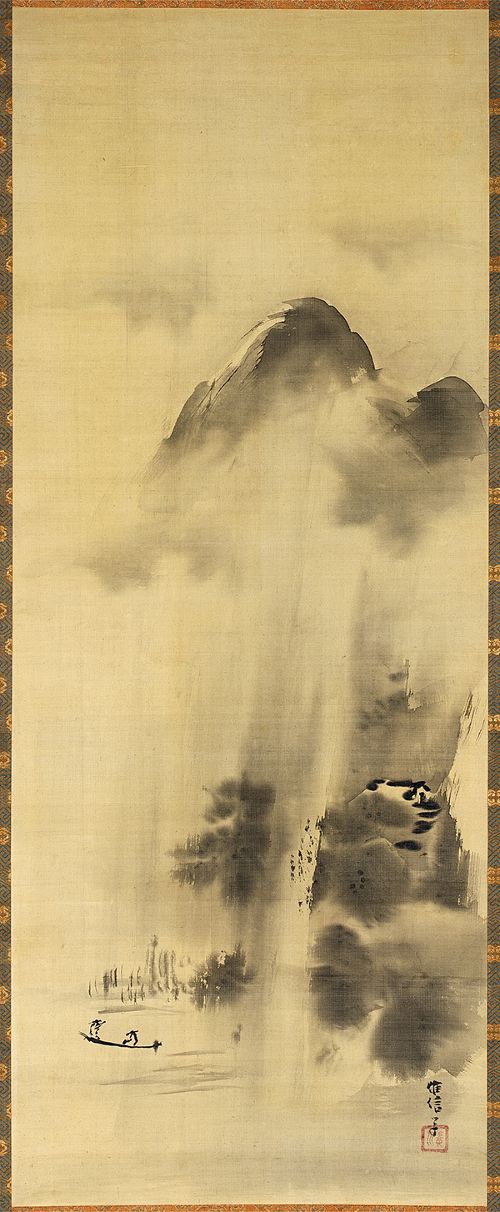Summer Weather: Kanō Yôsen'in Korenobu
July usually brings some steamy weather days to summer in New England. I’m sure we all know what it’s like when it’s already hot and humid and then it rains, adding a further haze to an already uncomfortable air. This painting by Kanō Yôsen'in Korenobu visually puts in me in mind of what such humid, rainy, hot days feel like.
 |
| Kanō Yôsen'in Korenobu (1753–1808, Japan), Landscape in Rain. Hanging scroll, ink on silk, 40 1/4" x 16" (102.3 x 40.6 cm). Image © 2024 Museum of Fine Arts, Boston. (MFAB-796) |
Korenobu's Landscape in Rain reveals great affinity with the individualist painters of the Ming dynasty (1368–1644) in China. The works of these artists were characterized by less reliance on linear contours and greater use of suggestion. Like his father, Kanō Michinobu (1730–1790), and many other Kanō artists, Korenobu was well versed in a variety of historic Chinese styles and painted large-scale works such as six-fold screens in the monochromatic style.
During the isolationist Tokugawa shogunate (1603–1868), which cut Japan off from almost all foreign contact, painting experienced a rejuvenation. Japanese artists explored many different past styles of painting both Japanese and Chinese. Painting continued to be characterized by the traditional, Chinese-influenced monochromatic landscape works, and by the more individualist styles of artists inspired by the Chinese amateur/scholar painters.
The Kanō School of Japanese painting traditionally has its origins in the artist Kanō Masanobu (1434–1530). At the time, Japanese painting was heavily influenced by the monochromatic landscape tradition of Japan. The school maintained a leading position as artists of the military dictators and military nobility who ruled Japan from the 1400s to the 1800s. Meanwhile, Kanō School artists were still the official painters of the imperial court and of the shoguns.
Over the centuries, the monochromatic painting was augmented by other styles within the Kanō School, including a decorative yamato-e style that became synonymous with the school name. Yamato-e, which originally flourished during the Heian period (794–1185 CE), explored the use of bright colors in flat shapes contrasting with gold leaf backgrounds.
Korenobu was a traditionalist painter. His father was also a talented traditionalist who worked in both the Chinese and yamato-e styles. Showing his talent for painting at an early age, Korenobu studied with his father. During the second half of the 1700s, Korenobu’s studio was highly influential in traditionalist painting. He was the 7th head of the Kobikicho branch of the Kanō School. The artists of the Kobikicho branch—named for its neighborhood in Edo—were the most influential of the Kanō groups and served as the personal painters for the Tokugawa shoguns.
Correlations to Davis programs: Explorations in Art 2E Grade 1: 4.4; Explorations in Art 2E Grade 2: 1.7; Explorations in Art 2E Grade 3: 5.4; Explorations in Art 2E Grade 5: 4.1; A Community Connection 2E: 4.5; A Global Pursuit 2E: 7.5; The Visual Experience 4E: 8.1; Exploring Painting 3E: pp. 158–159

Comments